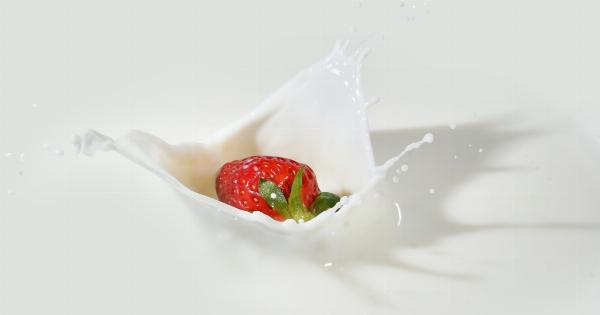Milk is a staple in most households, but nothing is more frustrating than opening up a carton of milk only to find that it has gone bad. Spoiled milk not only smells bad, but it can also make you sick.
Fortunately, there are several ways to prevent milk from going bad. Here are some tips to help you seal the deal and keep your milk fresh:.
1. Check the Expiration Date
The first step to preventing spoiled milk is to check the expiration date. Most milk will last anywhere from 5 to 7 days after the sell-by date, but it’s always best to err on the side of caution and use it before then.
If the date has passed, it’s best to discard the milk to avoid any potential health risks.
2. Store Milk at the Right Temperature
Milk is a perishable item, and it is important to store it at the right temperature to keep it fresh. The ideal temperature for storing milk is between 35 and 40 degrees Fahrenheit.
Make sure to store milk in the coldest part of your refrigerator and avoid placing it in the door, as the temperature in the door can fluctuate.
3. Keep Milk in Its Original Container
Milk is typically sold in cartons or jugs, and it’s best to keep the milk in its original container.
The packaging is designed to keep the milk fresh, and transferring the milk to a different container could introduce bacteria and cause it to spoil more quickly.
4. Don’t Leave Milk Out for Too Long
If you take milk out of the refrigerator, make sure to put it back as soon as possible. Leaving milk out at room temperature for too long can promote the growth of bacteria and cause it to spoil more quickly.
It’s best to only take out the amount of milk you need and immediately return the rest to the refrigerator.
5. Don’t Mix Fresh Milk with Old Milk
When you have a partial carton of milk that is close to its expiration date, it’s tempting to pour it into a new carton of milk. However, this should be avoided as it can cause the fresh milk to spoil more quickly.
Instead, use up the old milk first and then open a new carton.
6. Avoid Contamination
Contamination is one of the main causes of spoiled milk. Make sure to wash your hands before handling milk and avoid touching the inside of the container with your hands.
If you do touch the inside of the container, make sure to clean it before placing it back in the refrigerator. Additionally, avoid using dirty utensils or glasses when pouring milk.
7. Freeze Excess Milk
If you have excess milk that you won’t be able to use before it expires, consider freezing it. Milk can be frozen for up to three months, and it will still be safe to consume when thawed.
Make sure to label the container with the date it was frozen, so you know when it needs to be used by.
8. Use the Sniff Test
If you’re not sure whether the milk has gone bad or not, use the sniff test. Spoiled milk has a distinct sour odor that is hard to miss. If the milk smells bad, it’s best to discard it. Additionally, check the color and texture of the milk.
If it has become thick and lumpy, it has likely gone bad.
9. Don’t Buy Too Much Milk at Once
Buying too much milk at once can lead to waste and the risk of spoilage. Only purchase the amount of milk that you will be able to use within a week, and avoid buying in bulk unless you have a large household.
10. Consider Alternative Milk Options
If you find that you frequently have issues with spoiled milk, consider alternative milk options such as soy, almond, or oat milk. These options have a longer shelf life than milk and don’t spoil as quickly.































